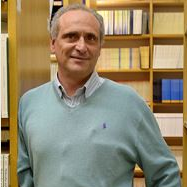Oxidative Stress and Cardiac Turnover Capacity
A special issue of Antioxidants (ISSN 2076-3921). This special issue belongs to the section "Health Outcomes of Antioxidants and Oxidative Stress".
Deadline for manuscript submissions: closed (31 October 2021) | Viewed by 11845
Special Issue Editor
Special Issue Information
Dear Colleagues,
Oxidative stress, defined as an imbalance between reactive oxygen species (ROS) production and the endogenous antioxidant defense system, has been demonstrated to be crucial to the onset and progression of many pathophysiological conditions, including cardiovascular disease. The heart is an organ particularly rich in mitochondria, and dysregulation of this large mitochondrial mass alters many signaling pathways crucial to conditioning in numerous cardiac dysfunctions. Apart from cardiomyocytes, an important impact also occurs on other cardiac cell lineages. Although an important body of knowledge is being accumulated on mature cells, less clear evidence exists on the impact of oxidative stress on the capacity of the adult heart to self-repair, especially with regard to resident multipotent progenitors and de-differentiating cardiomyocytes. This is particularly relevant with respect to the aging axis.
We invite you to submit an original research paper or a review article to this Special Issue, which will bring together current research on the impact of oxidative stress on the turnover capacity of the adult heart, both in physiological processes and diseased states. We are particularly interested in in vitro and in vivo studies, in any organism, on any of the following topics:
- net heart turnover;
- multipotent resident progenitors;
- de-differentiation of mature cardiomyocytes;
- cell metabolism and epigenetic regulation;
- cellular stress and redox signaling.
We look forward to your contribution.
Prof. Dr. Antonio BernadGuest Editor
Manuscript Submission Information
Manuscripts should be submitted online at www.mdpi.com by registering and logging in to this website. Once you are registered, click here to go to the submission form. Manuscripts can be submitted until the deadline. All submissions that pass pre-check are peer-reviewed. Accepted papers will be published continuously in the journal (as soon as accepted) and will be listed together on the special issue website. Research articles, review articles as well as short communications are invited. For planned papers, a title and short abstract (about 250 words) can be sent to the Editorial Office for assessment.
Submitted manuscripts should not have been published previously, nor be under consideration for publication elsewhere (except conference proceedings papers). All manuscripts are thoroughly refereed through a single-blind peer-review process. A guide for authors and other relevant information for submission of manuscripts is available on the Instructions for Authors page. Antioxidants is an international peer-reviewed open access monthly journal published by MDPI.
Please visit the Instructions for Authors page before submitting a manuscript. The Article Processing Charge (APC) for publication in this open access journal is 2900 CHF (Swiss Francs). Submitted papers should be well formatted and use good English. Authors may use MDPI's English editing service prior to publication or during author revisions.
Keywords
- ROS
- oxidative stress
- redox signaling
- heart turnover
- multipotent progenitors
- de-differentiating cardiomyocytes
- cell metabolism
- epigenetic regulation
- cardiovascular disease
- aging
Benefits of Publishing in a Special Issue
- Ease of navigation: Grouping papers by topic helps scholars navigate broad scope journals more efficiently.
- Greater discoverability: Special Issues support the reach and impact of scientific research. Articles in Special Issues are more discoverable and cited more frequently.
- Expansion of research network: Special Issues facilitate connections among authors, fostering scientific collaborations.
- External promotion: Articles in Special Issues are often promoted through the journal's social media, increasing their visibility.
- Reprint: MDPI Books provides the opportunity to republish successful Special Issues in book format, both online and in print.
Further information on MDPI's Special Issue policies can be found here.






